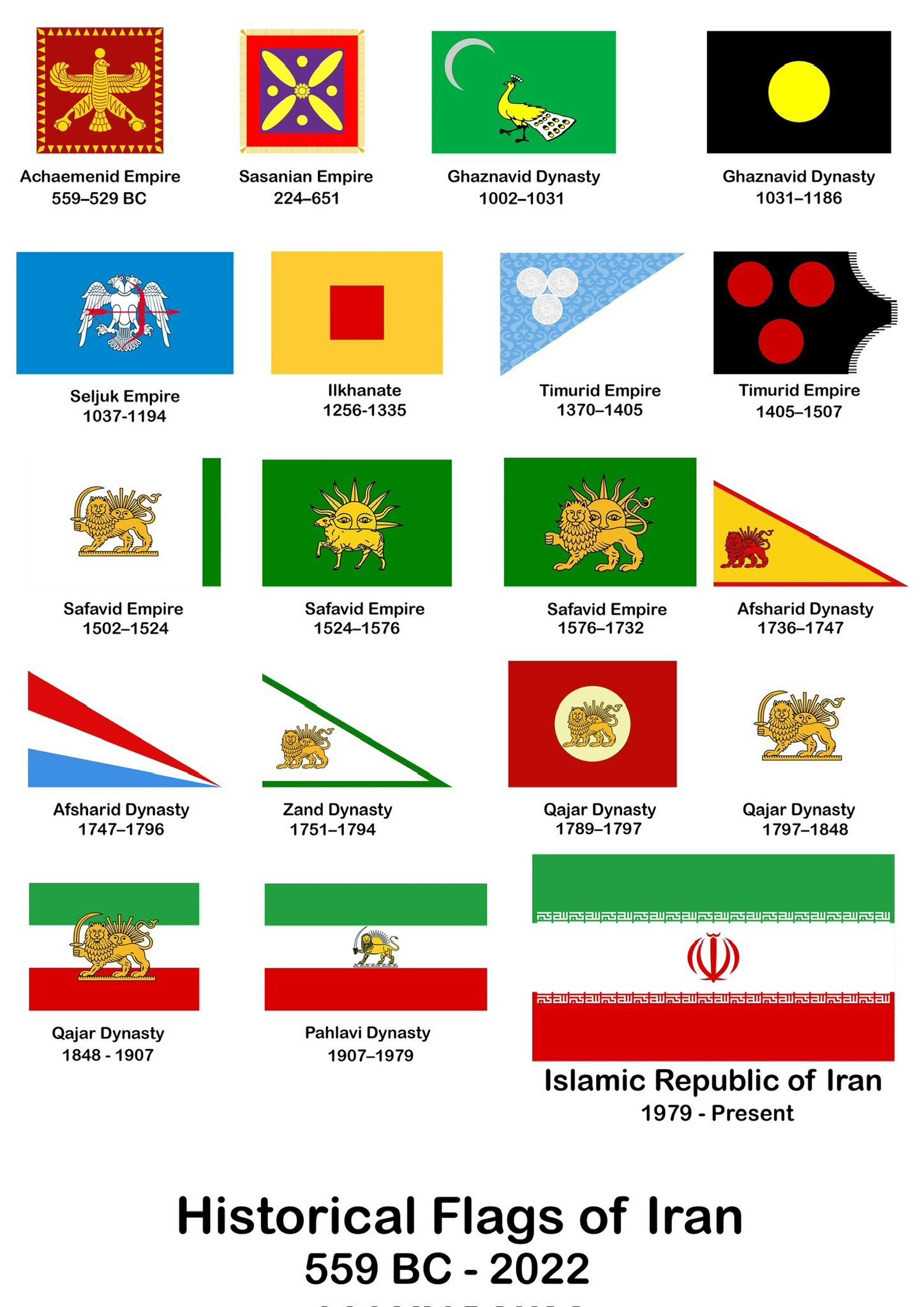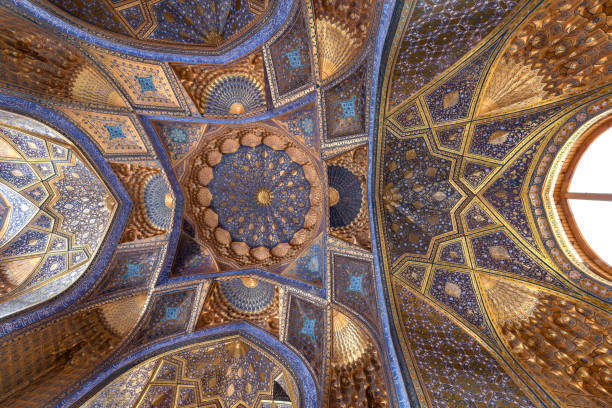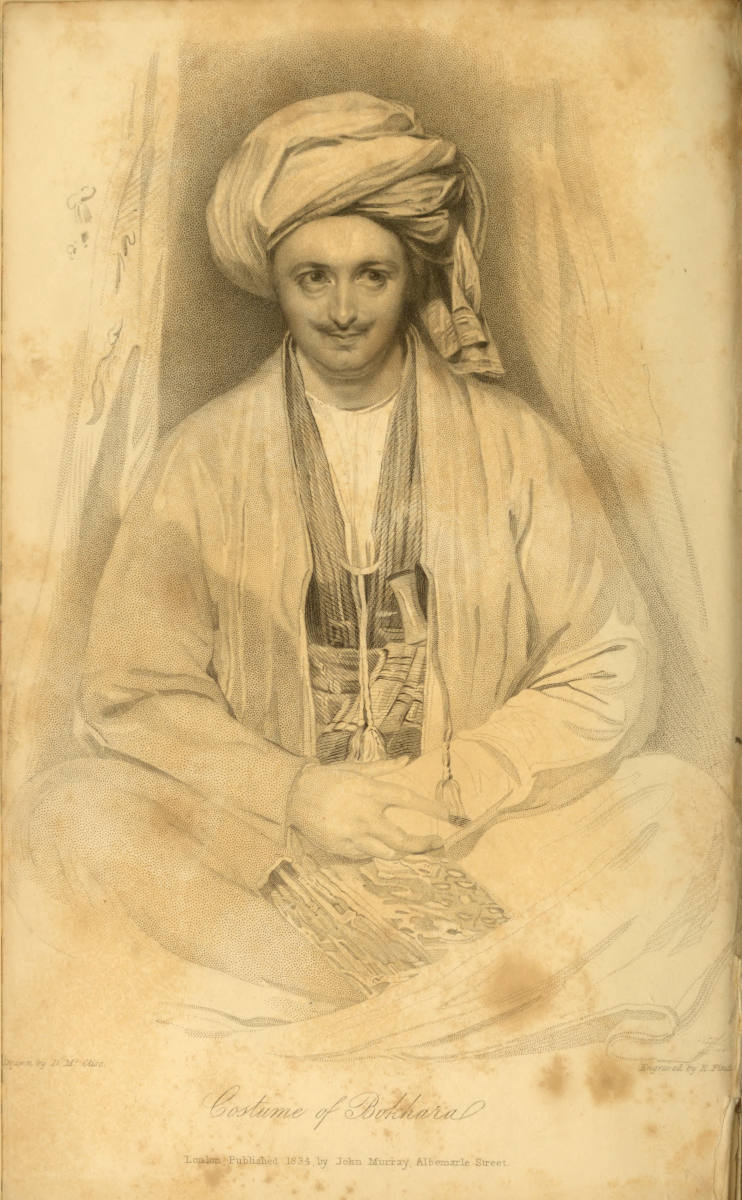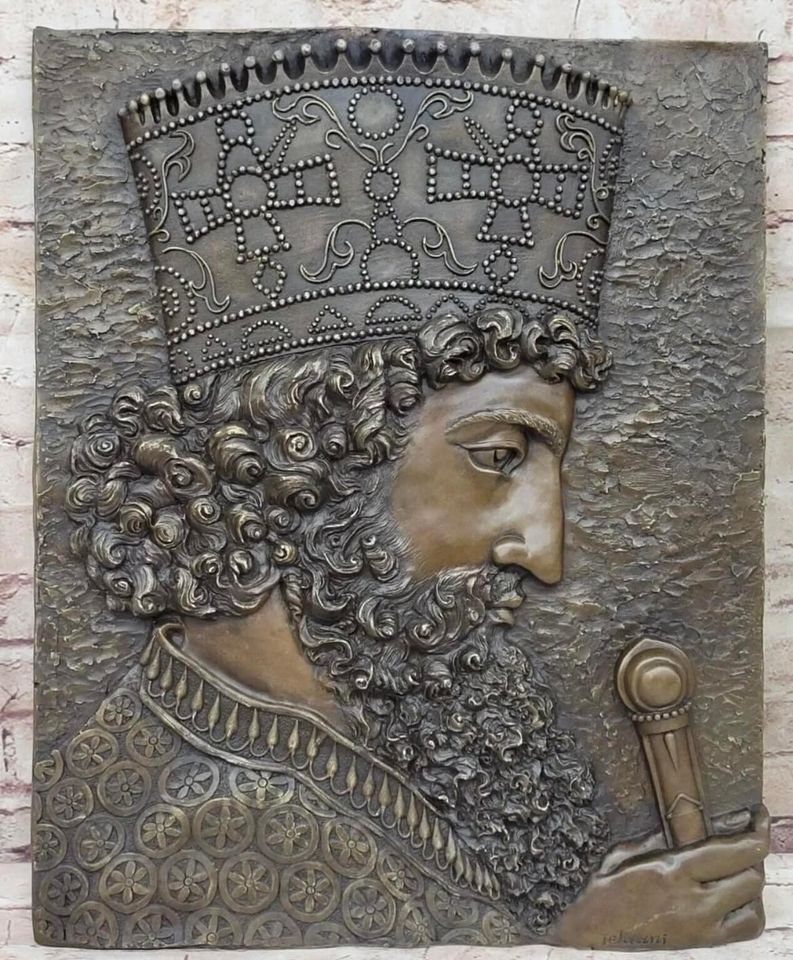4 Likes
#persia

history of the flags of #Iran (official name was adopted in early 1900s by Reza Pahlavi, the first king of Pahlavi dynasty).
The official flag of IRI was adapted in 1980s and modified later to include "aallaho Akbar" on the top and bottom of the White section in the middle. The emblem is made out of multiple half moon and a a sword making it the world Allah, many people in Iran refer to it as Kharchange (the crab).
One person like that
The #Carolingian Cross is but one variation in the vast historical imagery of Christian symbolic representations of the Crucifixion of Jesus, going back to at least the ninth century.[1] All crosses and Christian symbols have an inherent meaning arising from a multitude of sources and distinct features that set them apart from other religions.[2] From both a design aspect and a theological perspective, the Carolingian Cross consists of a mixture of Christian and pre-Christian concepts built over a long history of cultural adaptation, religious iconography, liturgical practices and theological premises. German graphic designer Rudolf Koch in 1932 published a collection of 158 plates of drawings of Christian symbols. Under the heading of "Cross", this includes twelve drawings of Christian cross variants. One of these, the "Carolingian Cross" (Karolingisches Kreuz) shows a cross of #four #triquetras
Iron Age
The term triquetra in archaeology is used of any figure consisting of three arcs, including a pinwheel design of the type of the triskeles. Such symbols become frequent from about the 4th century BC ornamented ceramics of #Anatolia and #Persia, and it appears on early #Lycian coins.[1]
The triquetra is found on runestones in Northern Europe, such as the Funbo #Runestones, and on early Germanic coins.[citation needed] It bears a resemblance to the valknut, a design of three interlacing triangles, found in the same context.
Insular art
The triquetra is often found in insular #art, most notably metal work and in illuminated manuscripts like the #Book-of-Kells. It is a "minor though recurring theme" in the secondary phase of Anglo-Saxon sceatta production (c. 710–760).[2] It is found in similar artwork on early Christian High Crosses and slabs. An example from early medieval stonework is the Anglo-Saxon frithstool at Hexham Abbey.[3]
The #symbol has been interpreted as representing the #Holy #Trinity, especially since the #Celtic revival of the 19th century. The original intention by the early medieval artists is unknown and experts[who?] warn against over-interpretation.[2] It is, however, regularly used as a Trinitarian symbol in contemporary Catholic iconography.
Buddhist tradition
The triquetra has been a known symbol in Japan called Musubi Mitsugashiwa.[citation needed] Being one of the forms of the Iakšaku dynasty signs, it reached #Japan with the dynasty's Kāśyapīya spreading technology and Buddhism via Kingdom of Khotan, #China and #Korea.[citation needed]
Modern use
The triquetra is often used artistically as a design element when Celtic #knotwork is used, especially in association with the modern Celtic Nations. The triquetra, also known as a "trinity knot", is often found as a design element in popular Irish jewelry such as claddaghs and other wedding or engagement rings.
Celtic pagans or neopagans who are not of a Celtic cultural orientation may use the triquetra to symbolise a variety of concepts and mythological figures. Due to its presence in insular Celtic art, Celtic Reconstructionists use the triquetra either to represent one of the various triplicities in their cosmology and theology (such as the tripartite division of the world into the realms of Land, Sea and Sky),[5] or as a symbol of one of the specific Celtic triple goddesses – for example the battle goddess, The #Morrígan. The symbol is also sometimes used by #Wiccans, #White Witches, and some New Agers to symbolise the #Triple #Goddess, or as a #protective symbol.[6]
https ://en.wikipedia.org/wiki/Triquetra
One person like that

View and details of the colorful blue and gold ceiling of the "Tilyâ Kori" ("decorated with gold" in #Persian) #Madrassah in #Samarkand.
Picture by Salvador Bakhi.
4 Likes
One person like that
2 Likes
6 Likes
Ahmed Anousheh
An even better Ney player... bad video, but OK sound and beautiful music.
#music #improvisation #AhmedAnousheh #ney #flute #Iran #Persia #Persian
3 Likes
1 Comments
Mohammed Eghbal
Probably the most beautiful sounding flute on earth is the Persian ney (the Ottoman has a mouth piece that makes it less interesting). I play the Japanese Shakuhachi, but I am tempted to acquire some of these reeds and learn the flute-in-mouth technique. After we talked about it, a friend of mine, who thought he might connect to his Iranian heritage by starting to play some flute, looked into it, but was discouraged by how cumbersome it is to have a wooden woodwind. The combination of wood and the moist of your breath is not a good one :) But he and his family might help me out as they speak Farsi and I don't :)
#music #improvisation #MohammedEghbal #Ahura #Ahuraproject #ney #flute #Iran #Persia #Persian
7 Likes
9 Comments
TRAVELS INTO BOKHARA
VOL. I.
https://www.gutenberg.org/files/58074/58074-h/58074-h.htm
London 1841
Printed by A. Spottiswoode,
New-Street-Square.
BEING THE ACCOUNT OF A JOURNEY FROM #INDIA TO #CABOOL, #TARTARY, AND #PERSIA;
ALSO, NARRATIVE OF
A VOYAGE ON THE #INDUS,
FROM THE SEA TO #LAHORE,
WITH PRESENTS FROM THE KING OF GREAT BRITAIN;
PERFORMED UNDER THE ORDERS OF THE SUPREME GOVERNMENT OF INDIA, IN THE YEARS 1831, 1832, AND 1833.
BY
LIEUT. ALEXR BURNES, F.R.S.
OF THE EAST INDIA COMPANY’S SERVICE;
AST POLITICAL RESIDENT IN CUTCH, AND LATE ON A MISSION TO THE COURT of LAHORE.





